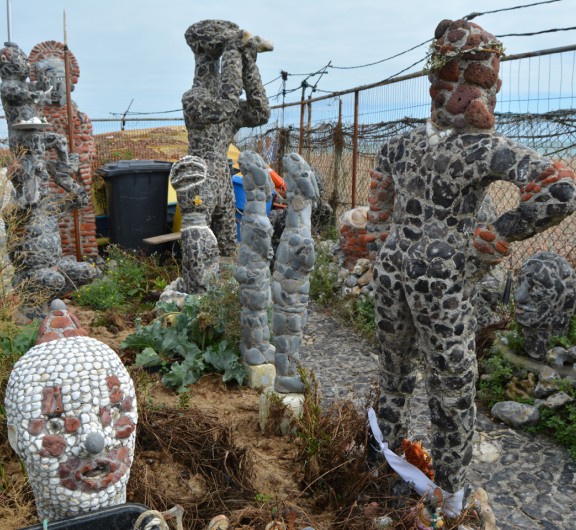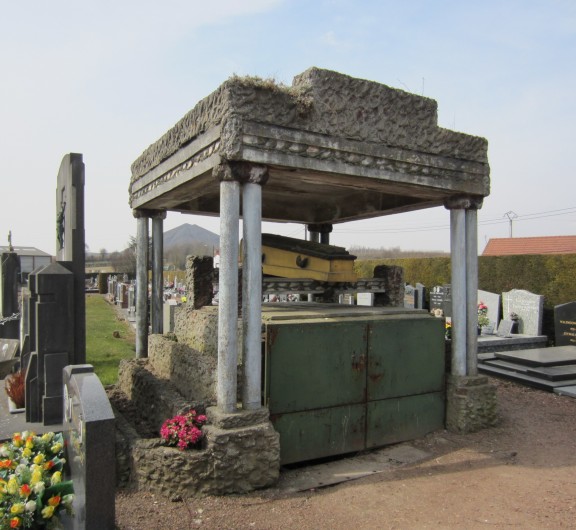Shell Grotto, Grotto Hill
About the Artist/Site
Discovered in 1835, this subterranean series of ornately decorated winding passageways stretching over 70 feet is believed to have been built in the early 1800s,but there is no definitive answer as to by who or why. Covered by 4.6 million shells, the Grotto lies under farmland that was never part of a large estate, thus bringing into doubt the theory that this was a rich man’s folly, for it is unlikely that anyone would build such a complex structure on someone else’s property. The theory that it was a smuggler’s cave can also be discounted, due to its distance from the water, the lack of connecting passageways to the sea, and the decorations themselves, which wouldn’t have been necessary for a utilitarian cave.
In 2009, a condition survey found a variety of mortars had been used to adhere the shells to the cave walls; these different materials may have been a result of historical repairs over a period of decades, if not centuries. Yet 99% of the shells themselves are native to the British Isles. In total, there are some 190 square meters of mosaic in the passageways and the final “Altar Chamber,” which measures roughly 5 x 6 meters. Sun and star forms predominate.
While the Shell Grotto remains in private hands, as it has been since its discovery, it is under the protection of English Heritage, which concerns itself with its conservation. Its biggest problem is dampness; due to these concerns, in the 1990s it was entered onto the list of Buildings at Risk, but, following a five-year conservation program, it was removed from this register. The ambient dampness continues to prevent the cleaning of interior shells, however, which had been darkened by decades of use of gas lamps to illuminate the passageways; if the shells were cleaned, it would introduce even additional moisture, further damaging the mosaics.
In mid-2008 a Friends of the Shell Grotto nonprofit organization was formed to help preserve and promote the site. Membership is open to all for 10£ per year, and provides invitations to special events as well as unlimited free entry to the Grotto. And in 2012 the Roundel Project was initiated, seeking to raise funds to underwrite the conservation and replacement, as necessary, of missing mosaic panels.
During the summer the Shell Grotto is open daily; between October 30 and mid-March it is open weekends only. A small fee is required for entrance, and a yearly membership fee is available for those who might visit often. School and group visits can be accommodated in advance.
~Jo Farb Hernández, 2016
Contributors
Map & Site Information
Grotto Hill, CT9 2BU
gb
Latitude/Longitude: 51.3879211 / 1.3894553
Extant
Grotto Hill, Margate, CT9 2BU, United Kingdom
During the summer the Shell Grotto is open daily; between October 30 and mid-March it is open weekends only. A small fee is required for entrance, and a yearly membership fee is available for those who might visit often. School and group visits can be accommodated in advance.
Nearby Environments







Post your comment
Comments
No one has commented on this page yet.